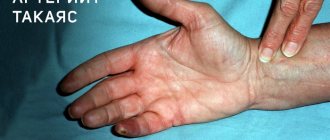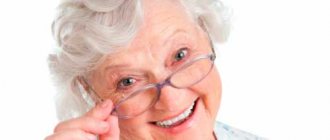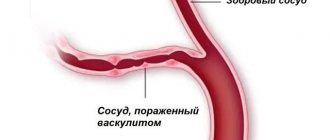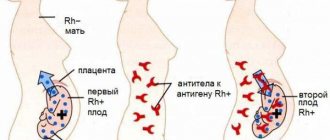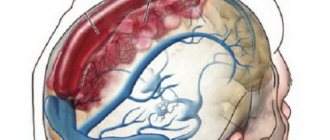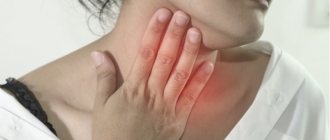Pain in the legs due to varicose veins is a complaint that patients often present when visiting doctors. In the presence of varicose leg pain, phlebologists at the Yusupov Hospital conduct a comprehensive examination of patients using physical and instrumental diagnostic methods. For ultrasound examinations, the latest devices from the world's leading manufacturers are used, which have high resolution and allow the patient to be examined in one, two or three modes.
Conservative treatment of patients who have pain in varicose veins in the legs is carried out with the latest generation of medicines. Their effectiveness and safety have been proven by scientific research. Highly qualified surgeons and the presence of modern equipment and surgical instruments in the phlebology department allow phlebologists to perform operations using both classical and innovative techniques.
Severe cases of varicose veins, when pain due to varicose veins in the legs is not relieved by medications, are discussed at a meeting of the expert council with the participation of candidates and doctors of medical sciences, doctors of the highest qualification category. Leading specialists in the field of diseases of the peripheral venous system collectively decide how to reduce pain from varicose veins of the legs. If pain in a vein in the leg due to varicose veins does not go away as a result of adequate conservative therapy, patients are offered surgical intervention. Surgeons perform the operation only after obtaining the patient's informed consent.
Why does the vein in my leg burn?
It is difficult to answer the question why a vein in the leg burns if you do not know the person’s anamnesis (life history and illness). Therefore, before the doctor begins instrumental studies, he is sure to ask whether there were any prerequisites for the development of such a complaint as a burning vein in the leg.
The following may be considered prerequisites:
- Varicose veins in close relatives;
- Complaints of pain, heaviness and fatigue in the legs, which manifest themselves especially clearly in the evening and after static load;
- Green veins on legs;
- History of vein blockage;
- Spider veins on the skin of the legs.
If a person has the above symptoms, then it is highly likely that he suffers from varicose veins of the lower extremities. If there is a symptom such as a burning vein in the leg, the doctor may assume the development of complications of varicose veins: thrombophlebitis and deep vessel thrombosis.
These dangerous conditions develop when a blood clot forms in the lumen of blood vessels. The difference between them is where exactly the thrombus is localized: if in the superficial venous system it is thrombophlebitis, in the deep venous system it is thrombosis.
Trophic venous eczema - what is it?
Trophic venous eczema is a pathological condition that occurs in the form of autoimmune dermatitis, that is, serous non-infectious inflammation of the skin (mostly the papillary layer of the dermis and epidermis), accompanied by symptoms of swelling, redness, itching and pain.
Trophic venous eczema
Venous eczema is a type and common form of eczema, which is caused by congestion in the skin due to impaired venous outflow. Venous eczema is also called varicose, congestive or gravitational. It most often has a chronic (recurrent) course. The pathology affects one or both lower extremities in combination with venous insufficiency. In the modern European, and most popular among leading experts, classification of chronic venous diseases - CEAP, this pathology is designated as C4a. This means quite severe tissue damage due to chronic venous edema.
Who should you turn to when a vein in your leg burns?
Thrombophlebitis and deep vein thrombosis require immediate medical attention. Moreover, the sooner qualified assistance is provided, the higher the chance that only conservative therapy will be required. Therefore, if you feel that a vein in your leg is burning and in addition to this, the symptoms described below appear, then immediately consult a phlebologist.
- Redness of the leg, especially pronounced along the location of the vessel;
- Local increase in skin temperature of the leg;
- Sharp or nagging pain in the leg that prevents you from walking independently;
- Severe swelling of the leg.
Angiologists and phlebologists use blood-thinning drugs—anticoagulants and antiplatelet agents—to treat these complications of varicose veins.
Trophic venous eczema is very bad
Varicose eczema has a chronic, relapsing course and a tendency to progress. Quite often you can encounter a situation, especially in public hospitals, when only dermatologists treat venous eczema. Considering the main etiological component of the pathology, impaired venous outflow, treatment of such patients takes years.
Chronic recurrent eczema on the right lower limb
The disease slowly recedes, but invariably appears again. Moreover, trophic changes in the lower extremities progress, lipodermatosclerosis occurs, and then an ulcer appears.
A vein burning in the leg: is it dangerous?
In order to determine why the vessel on the leg is burning, a phlebologist needs additional examination. The doctor, after performing Dopplerography of the vessels of the legs (it allows you to evaluate blood flow), confirms or rejects the diagnosis of thrombophlebitis and thrombosis.
If there is a thrombus in the lumen of the vessel, it will be visible on the monitor screen. It is important to determine the exact location of the thrombus. The risk of a blood clot breaking off from the vessel wall and blocking one of the vessels depends on this.
When a blood clot enters the pulmonary artery, pulmonary embolism develops. PE is a potentially life-threatening condition, since when blood circulation in the lungs is blocked, the entire body experiences oxygen starvation.
Why does trophic venous eczema almost always appear on the lower extremities?
The answer to this question lies in the pathogenesis of varicose veins, the dominant cause of venous eczema. Varicose veins affect exclusively the lower extremities, where, according to the gravity gradient, it is in their distal parts that trophic disorders occur. One of which is venous eczema.
Trophic eczema of the lower extremities
Pathological eczematous changes in the skin of the lower extremities are most often caused by varicose veins, since they are the cause of impaired venous outflow (up to 90% according to leading experts in the region).
How to avoid conditions when a vein in the leg burns?
In order to avoid the sensation of a burning vein, you should follow the prevention of varicose veins of the lower extremities, which includes an active lifestyle, giving up bad habits and regular visits to a phlebologist. This is especially important for people at risk:
- For patients in the postoperative period (no matter what kind of operation was performed), it is not necessary to remain in bed for a long time. As soon as your doctor says you can walk, be sure to move. Immobilization leads to poor circulation and increases the risk of developing a blood clot in the veins.
- According to statistics, a huge number of women experience venous thrombosis and even thromboembolism during pregnancy. Pregnant women are advised to walk a lot in the fresh air, eat right and watch the kilograms they gain. It is advisable that your weight during pregnancy does not increase by more than 12 kg.
Do not ignore the appearance of pain and other symptoms of varicose veins. If treatment is started in a timely manner, thrombophlebitis and deep vein thrombosis do not occur.
Causes
Varicose veins of the lower extremities are a disease that develops for various reasons. The following factors play a role in the formation of pathological changes in the inner lining of the venous vessel:
- burdened heredity;
- obesity;
- hormonal imbalances;
- pregnancy;
- wrong lifestyle;
- chronic constipation.
- uncontrolled use of hormonal contraceptives;
- systematic sports activities.
The main reason for the development of varicose veins is changes in the wall and valves of the veins.
With valvular insufficiency of various parts of the venous bed of the lower extremities, a pathological, retrograde (in the opposite direction) blood flow appears. It is the main factor in damage to the microvasculature. In the presence of various risk factors and under the influence of gravity, the pressure in the venous knee of the capillary increases, which reduces the arteriovenular gradient necessary for normal perfusion of the microvasculature (passing blood through the vascular wall). The consequence is first periodic and then constant oxygen starvation of tissues. Patients with varicose veins have severe pain in their legs because the soft tissues do not receive oxygen, swelling occurs, which compresses the nerve fibers.
In the future, with varicose veins, trophic disorders develop. Varicose veins are accompanied by severe pain in the legs at night. With the development of a trophic ulcer, the pain intensifies. Patients are forced to sleep with a pillow under their feet. If inflammation of the soft tissues around the trophic ulcer occurs, the pain becomes unbearable. In some cases, doctors are forced to prescribe opiates to relieve pain.
Make an appointment
Trophic varicose eczema - treatment without surgery
The main factor in the development of congestive eczema is the pathology of the venous system. Therefore, there is no need to talk about any effective treatment without radical intervention. The best solution would be to stop the inflammation and carry out a procedure to remove varicose veins. But is surgery really that scary?
Trophic eczema - laser treatment in our center
Modern European technologies for vein removal are not inferior to advanced manipulations in dentistry in terms of minimal surgical trauma and possible side effects. But today it would not even occur to anyone to refuse caries treatment due to fear of intervention.
Frequently asked questions from patients on the Internet about trophic venous eczema
How to treat venous eczema of the legs in Moscow?
For good treatment of venous eczema of the lower extremities in Moscow, you need to contact a competent specialist, a phlebologist. The doctor will conduct a detailed diagnosis, including an ultrasound examination. Only after this can we talk about modern treatment. The best solution would be to find a good city phlebological center, where the ultrasound will be performed by the phlebologist himself.
What is the modern treatment for venous eczema of the legs in Moscow?
In Moscow, good modern treatment of venous eczema that meets European standards includes innovative technologies for both diagnosis and treatment. Leading city phlebological centers, including our Moscow Innovative Phlebological Center, successfully treat venous eczema. First, a detailed duplex angioscanning of the venous system of the lower extremities is performed. Only then is treatment prescribed, including the fight against local inflammation and modern treatment of the true cause of eczema, varicose veins.
How to treat venous eczema with folk remedies?
Specialists of the Moscow City Phlebological Center have good experience in working with various trophic disorders in venous diseases, including venous eczema. Leading phlebologists at our center do not recommend treating venous eczema with folk remedies. The disease responds well to treatment using modern technologies, but we often encountered serious complications after treatment with folk remedies.
My mother has venous eczema on her legs, which doctor is best to see?
If you suspect that your mother has venous eczema, it is better to first contact a good phlebologist, a doctor specializing in the diagnosis and treatment of venous pathology. First you need to understand the cause of inflammation in the lower extremities. You may need the help of a dermatologist. If eczema is of venous origin, then now there are modern European technologies with the help of which curing your mother will not present any special problems.
Results of treatment of trophic venous eczema. Photos before and after treatment
The result of treatment of trophic eczema using endovenous laser coagulation (EVLC) using German Biolitec technology in our center
Photos before and after treatment of trophic eczema on the left lower limb
The result of treatment of trophic venous eczema using radiofrequency ablation (RFA) in our patient
Photos before and after treatment of trophic venous eczema on the left lower limb
Trophic venous eczema - laser treatment (EVLO, EVLT), radiofrequency treatment (RFA, RFO)
Considering that radical treatment of varicose eczema is the treatment of venous pathology, it is modern methods of removing varicose veins that will be the main way to combat eczema itself. Today, the undisputed leaders at the forefront of innovative treatment of varicose veins are thermal obliteration techniques, laser and radiofrequency. If we compare both technologies, there are simply no fundamental differences for the patient.
Treatment of trophic eczema with radiofrequency
What are the advantages of thermoobliteration technologies:
- Radicality and effectiveness (when used by experienced specialists, the result is practically 100%).
- Low invasiveness, the procedure is carried out through skin punctures.
- Highest cosmetic value.
- Full outpatient, no need for anesthesia or hospitalization.
- Safety and comfort of the procedure for the patient.
The result of laser treatment of trophic eczema after 1 month
After endovascular treatment, the symptoms of eczema quickly resolve on their own.
Trophic eczema, treatment in Moscow
Good treatment of venous eczema in Moscow can be divided into local (topical effect on skin inflammation) and treatment of the venous system. In the first, a dermatologist is often actively involved. Local treatment includes:
- Ointments and creams, steroid drugs, both as part of the latter and as part of systemic treatment.
- The use of antibiotics and antiseptics when an infection occurs.
Often, in the conditions of public medicine, patient care ends at the stage of the above topical treatment. This is not the best solution, since the disease is based on completely different reasons and a relapse of the disease will not take long to occur. Namely, venous stasis, which requires a slightly different approach. It is very important that a patient in Moscow has a timely appointment and diagnosis with a good phlebologist who can determine the correct tactics for managing the patient. The treatment of venous eczema is based on eliminating stasis and improving venous blood flow. Correction of the latter most often involves removing pathologically altered varicose veins. The presence of innovative technologies in modern Moscow centers makes it possible to effectively treat even complicated forms of varicose veins, moreover, on an outpatient basis.
Treatment of trophic eczema in our phlebology center
Leading medical centers in Moscow for the treatment of venous pathology use thermoobliteration techniques for these purposes. In a good city medical phlebology center you can count on safe, effective treatment. Modern vein removal procedures are performed under local anesthesia through skin punctures with minimal surgical trauma.
Why do my veins hurt when exercising?
Veins themselves cannot hurt.
“The discomfort that patients with varicose veins often experience is caused by impaired lymphatic and venous drainage in the lower extremities,” says Grigory Bashkirtsev. — An increased amount of fluid accumulates in the intercellular space and irritates pain receptors, which leads to nagging pain with varicose veins. If the patient already has an inflamed vein, the inflammatory process will be accompanied by other symptoms.”
With some types of loads, pain after training occurs more often.
“Impact training (high-intensity aerobics and step aerobics, high-intensity running), lifting heavy weights, especially in a standing position, jumping rope, jumping on a stand, burpees, some static yoga asanas - all of this puts additional stress on the veins and leads to the appearance of unpleasant pain symptoms,” says Alena Gribanova.



